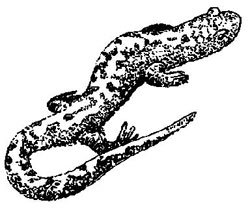I know that between the first and second years you were there that a change in superintendents occurred. Was the park very different under John Wosky versus how it had been under Mr. Leavitt?
No, I think it was just the same sort of administrative polices. Leavitt had been in the Park Service for a long period of time. It had been his career in life. He was getting ready to retire and he was quite an old man.
I know he had been in the National Park Service for 40 some years.
See, there you are. The new man who took over. I don’t recall ever having met him.
I wanted to know who named the Sphagnum Bog.
The Crater Springs bog? Wasn’t it on the map?
Sphagnum Bog wasn’t on the map until the next edition appeared [in 1956], much like Quillwort Pond.
Quillwort Pond was named by Ruhle. You remember that in the Nature Notes article, he stated that he’ll suggest the name to the authorities in Washington. As for the Crater Springs bog, I really don’t know.
In the article, you talk about a bog that is covered with sphagnum moss. I thought the name might have arisen from what you saw. Did you ever meet Elmer Applegate?
I never did. I knew that name when I was working in the park from having gone through the literature.
He knew the park area so thoroughly, and it is strange that he never did get out there.
It is an oddity, isn’t it? To get out to the bogs was fairly difficult. You had to go along a Forest Service road and you had to have keys to the gates. It wasn’t the kind of place you could reach without any trouble at all.
You came from the Forest Service side? You didn’t go out on one of the fire roads from the rim?
I thought that I got there on the only road available. Was there more than one?
There are some fire roads that might have gotten you near there, but I don’t know what kind of shape they were in at that time.
I had a vehicle loaned to me by the park. I drove it out there and I had gotten as close to the pond areas as I could. I had noticed that pond area on the map. I hiked the rest of the way. The naturalist staff had really never gone out there to look at those plants. Any member of the naturalist staff would have immediately noticed those carnivorous plants. They are very obvious.


